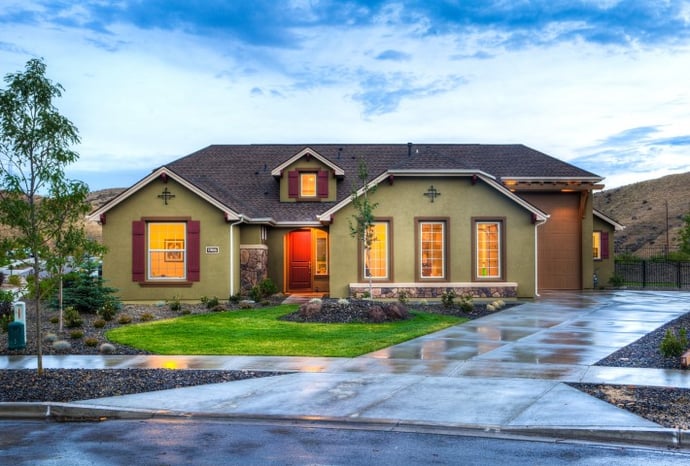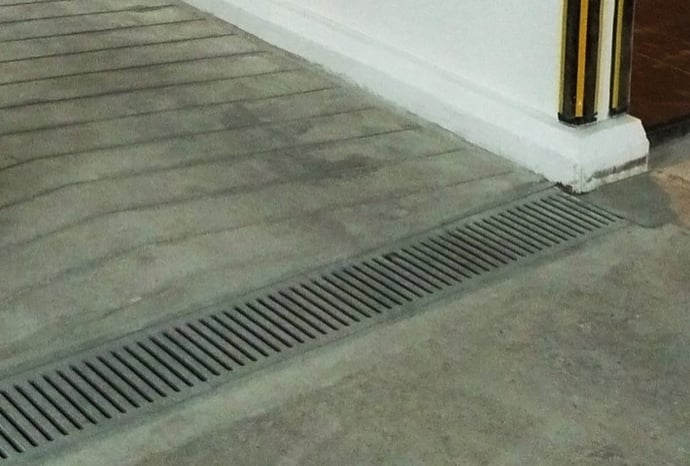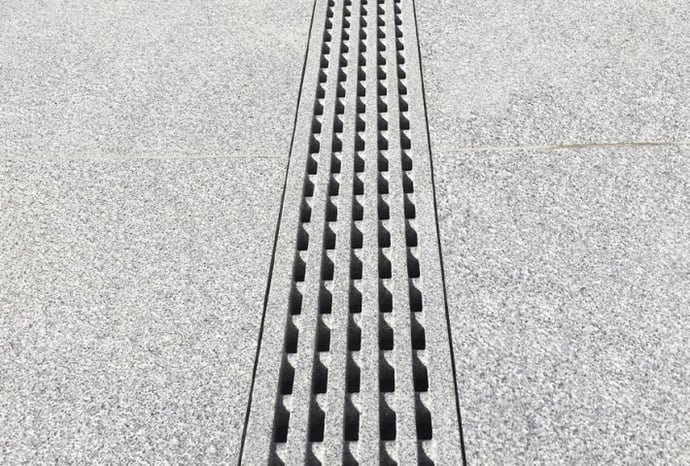What happened the last time you had heavy rainfall or a lot of snowmelt? Did the water quickly drain off your property? Or did it pool and cause flooding around your driveway?
Sloped driveways and heavy rainfall make for an unfortunate combination and can become a dangerous slipping hazard. Plus, excess water can end up flooding your yard or seeping into the foundation of your house.
Luckily, there are a few solutions that are effective at solving poor driveway drainage. Let’s take a look at the ones you should consider.

Sloped driveways can face severe flooding if drainage needs are not met. ©Binyamin Mellish | https://www.pexels.com/
Solutions for Poor Driveway Drainage
- Permeable Pavements
Permeable pavements are made from materials that allow water to soak into the surface. A similar alternative is to choose pavings that have gaps in between. With both of these options, water can drain directly into the ground.
There are a wide variety of options when it comes to materials and colours. This can make it very easy to incorporate into different styles of landscapes.
It is important to note that this option requires redoing the entire driveway surface, which can be a significant undertaking. Also, the amount of water that can be drained may be limited by the permeability of the surface and ground.
- Drainage Pipes & Gullies
Drainage pipes and gullies collect water into a drain that is installed on the driveway surface. Pipes then funnel the excess water away. These pipes can lead to a storm drain or other parts of your property, such as a pond, where the water will be released.
- Swales
Swales are large ditches that are placed next to a driveway. Instead of flowing onto the driveway surface, water flows into the swale where it can be channelled away.
You can customize the swale to match the landscape and even add some greenery around it. However, swales take up a lot of space and may not be suitable for a home’s yard.
- Driveway Trench Drain
Trench drains are the most common type of driveway drainage solution. These are long channels that run across the width of the driveway. Water flows into the drain, which can empty into additional drainage elements around your home.

Trench drains are an effective way to drain driveways and other surfaces.
Trench drains are a common solution for sloped pavements. They are covered with grates that prevent debris from getting in the drain while also providing a surface for vehicles and pedestrians to travel over.
Driveway trench drains are easy to install, long-lasting, and suitable for almost any driveway. They can even be placed close to the building foundation to prevent water from running in.
Install a Driveway Drain
While installing driveway drains can be a do-it-yourself task, it’s best to leave it up to the professionals. They can handle the steps involved and make sure the trench drain is installed in the correct location and position.
- Install the Channel
The process for installing a driveway drain will be a little different depending on whether you plan to relay the driveway or not. Keep in mind that if you do plan to lay a new driveway, you may need to apply for permits before beginning.
The first step will be to dig the channel where the drain will sit. It should be deep enough to house both the channel and the grate, plus about 100 mm extra. Then, add concrete and sand to form a base. The channel will be laid on top of this base or formed in place, depending on the type of channel chosen. Concrete is then poured around the channel.
After this, you can pour the new driveway surface. If you aren’t relaying the driveway, you’ll need to cut into the current surface to create the channel. The rest of the process is similar for both situations.
- Choose a Grate
Trench drain grates simply lay on top of the channel. This makes them easy to clean. However, you can have them bolted down if the situation calls for it.
The best option is to use reinforced stone grates that can be created with customized patterns and colours. This allows you to pick a design that matches the rest of your landscape.
Driveway trench drain grates that are used in commercial driveways may need some optional features. You can choose heavy-duty grates that can handle vehicular loads of up to 40 tonnes.
 Choosing durable drain grates is an important part of keeping your drains unclogged and flowing freely.
Choosing durable drain grates is an important part of keeping your drains unclogged and flowing freely.
How Do You Stop a Driveway From Flooding?
There are many solutions that can stop a driveway from flooding. You’ll need to consider a few different factors when choosing the best option for your driveway.
- How much rainfall is expected?
Certain solutions can handle a lot of water, while others can’t. - What look do you want?
Swales, trench drains, and permeable pavements have very different aesthetics. What flows the best with your landscape? - How much upkeep are you willing to do?
Trench drains require very little upkeep, while other options might need more.
Keep in mind that you can choose multiple solutions. However, it might be best to start with the best option for your situation.
Stop Your Driveway Fooding with Driveway Drains
Driveway flooding creates slip hazards, makes the space more difficult to use, and can even cause damage to your landscape from run-off. Luckily, solutions such as driveway drains can make it easy to get your driveway flooding under control.
Talk with the drain grate specialists at Jonite to find a solution that works for you.










